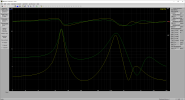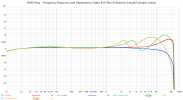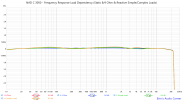Extremely few……
And very few speakers have such loads. Perhaps some Hypex/purify amps and Benchmark can handle these loads which do completely not make any sense today.
Weren’t it some 989 Quad Electrostats and Beveridge Speakers in the 70s and 80s with these capacitive Amp Killing loads, even down to 0.5 Ohms at 20 kHz?
The owners have known wich Amps only they could use.
The (wrong) thinking in these days was: If it can handle even this speaker - it must be a good amp. Even for my 10 times less demanding speakers.
It’s wrong thinking because: If your speaker is not extremely demanding, you don’t have to have this expensive Mark Levinson stuff. Every amp with accurate amplification would have done the job even as good as the amps which can handle 1 Ohm!


